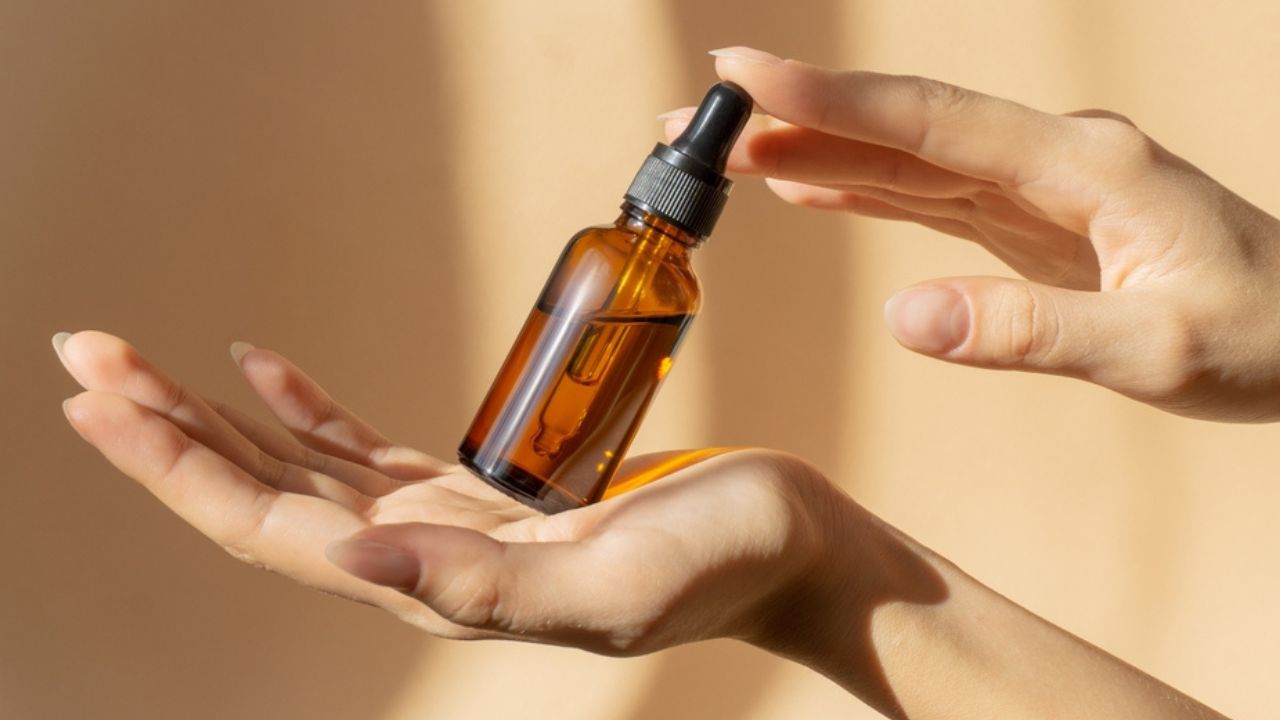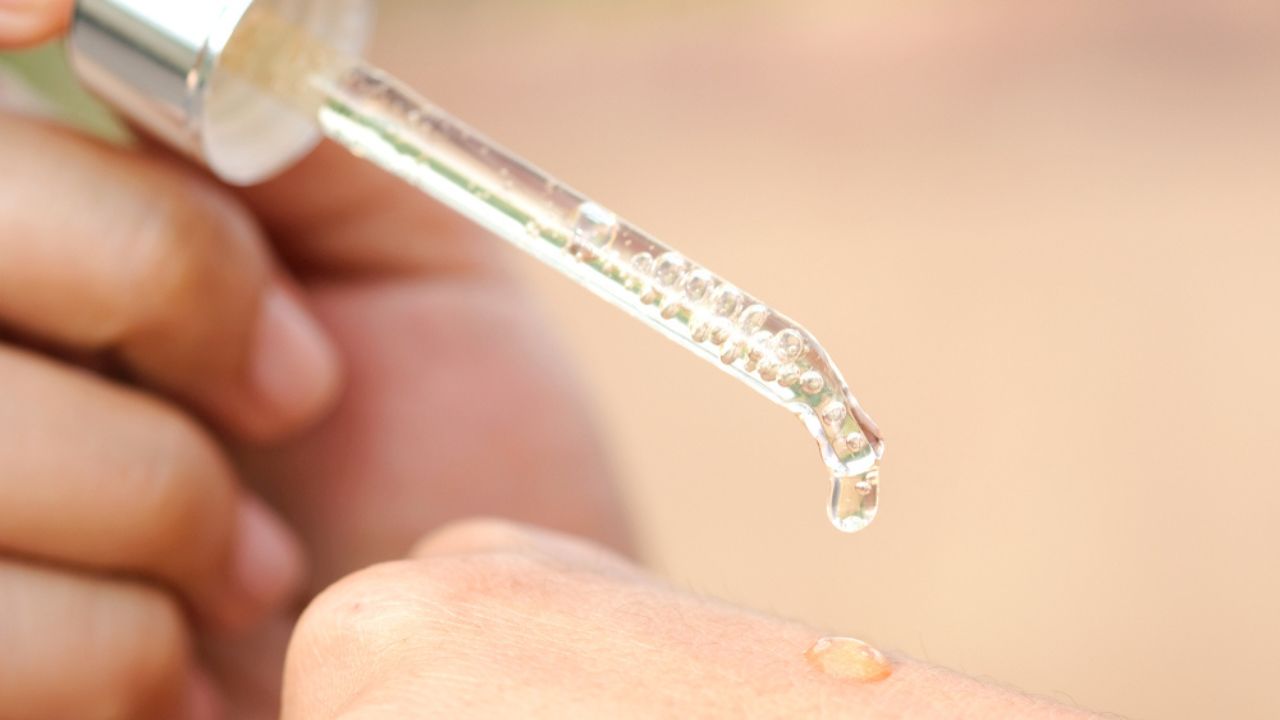Tranexamic Acid for Skin: Benefits, Risks, And How to Use It
Discover the potential of tranexamic acid for skin concerns such as melasma, dark spots, breakouts, rosacea, etc. Learn in detail about its benefits and risks.

The use of acids in skincare is barely a new concept. While AHAs and BHA have become the most obvious solutions for exfoliation, skin renewal, and acne management, hyaluronic acid, and polyglutamic acid are widely understood as the pinnacles of hydration.
Among all, tranexamic acid for skin is one such goodie that is yet to gain momentum as a topical skin-rejuvenating ingredient amongst the masses. Ironically, compared to the formerly-mentioned popular active ingredients, tranexamic acid is one that suits almost all skin types — oily, combination, dry, acne-prone, and normal skin — and caters to multiple skin concerns.
Several skincare researchers have speculated tranexamic acid’s similarities with other active ingredients such as vitamin C, hydroquinone, phytic acid, niacinamide, and even retinol in some cases. However, it is largely understood as a skin brightening and depigmenting agent, targeting skin issues such as epidermal pigmentation, post-breakout inflammation, and sun-induced damage. It is extensively used as a topical treatment for patients with melasma.
This article explores these points in detail to help you get a better idea of how this active ingredient works on the skin, the benefits and risks associated with it, and how one can use this ingredient in their skincare regimen.
What Is Tranexamic Acid And How Does It Work?

Often misinterpreted as an exfoliant or hydroxy-acid, tranexamic acid is actually a synthetic derivative of the amino acid lysine. And, while it has been widely used in the treatment and prevention of bleeding disorders, experts have truly gained insights into its skincare benefits only in the last decade.
It is a plasmin inhibitor and an anti-fibrinolytic agent, which works by inhibiting melanocytes to brighten the skin cells. Also, it is a water-soluble ingredient that exhibits anti-inflammatory, anti-angiogenic, and hypo-pigmentary properties to soothe and treat acne, reduce melanin-induced hyperpigmentation, and calm rosacea flare-ups through topical application (1), (2). Let us scroll below to understand better the advantages of topically applied tranexamic acid on the skin.
What Are the Benefits of Using Tranexamic Acid for Skin?

The following are a few science-backed points to look into:
1. Reduces Dark Spots And Melasma
The most prominent skin benefit of tranexamic acid is its complexion-enhancing action. Several studies show that it helps reduce pigmentation in melanin-cluttered skin areas, which can be seen in the form of dark spots, freckles, age spots, and even melasma (2). As a skin-brightening active ingredient, tranexamic acid has similar functions to hydroquinone and dexamethasone. However, the side effects of the latter two are more, which makes topical tranexamic acid a gentler and safer solution (2).
2. Reverses the Impact of Sun Damage
UV-exposed skin often experiences sun spots, tanning, inflammation, redness, and hyperpigmentation, which can alter a person’s appearance and come in the way of a clear complexion (3). However, with regular use of topical tranexamic acid, one can significantly reduce these pesky imperfections for an even skin tone (4).
3. Reduces Acne And May Help with Acne Scarring
Tranexamic acid has some impressive anti-inflammatory properties, which help heal multiple skin problems, considering many of them stem from inflammations. Acne breakouts are one such common skin problem, which benefits greatly from tranexamic acid (5). Moreover, studies speculate that the hypo-pigmentary effects of tranexamic acid may help alleviate the redness in acne scars, thereby improving the complexion overall (6). Hence, tranexamic acid is an excellent addition to the skincare routine of those with acne-prone skin.
4. May Improve Skin Barrier Recovery
Here’s something that all skin types can benefit from. An optimal skin barrier function is crucial to prevent and accelerate the healing process of pesky skin issues and to maintain healthy skin homeostasis (7). A study indicates that the topical use of tranexamic acid can speed up the healing process of the skin barrier and facilitate self-repair, for overall healthier skin (8). However, considering this needs some more research, it is advisable to not swap this active ingredient with others such as topical ceramides, squalene, niacinamide, etc. but instead use it in addition to them.
5. May Help with Rosacea

Common symptoms of rosacea are indicators of a damaged skin barrier. Tranexamic acid, with its anti-inflammatory and barrier-repair properties, can be of immense help in reducing rosacea flare-ups and redness, thereby improving skin health and appearance (9).
6. Helps with Reducing Wrinkles
This is a less-known fact about the properties of tranexamic acid, but an important one. A prospective study conducted by the Journal of Cosmetic Dermatology indicates that tranexamic acid shows some skin rejuvenation benefits, through which it helps reduce the volume and area of wrinkles on the skin (10). The results are likely to be more visible in skin types wherein wrinkles have been caused by severely dry skin, as indicated in a rat skin experiment (11).
7. Reduces Uneven Skin Tone:
By reducing the appearance of hyperpigmentation, tranexamic acid improves the overall complexion and tone of the skin. It can have impressive brightening effects on dull skin and is gentler than topical hydroquinone.
Is Tranexamic Acid a form of Retinol?

People often regard multi-tasking skin-rejuvenating ingredients as a form of retinol, but that is not true in the case of tranexamic acid. This active ingredient is a derivative of the amino acid lysine, which is why it contains plasmin-inhibiting properties and has multiple health benefits other than skincare (12).
“Tranexamic acid and retinol can both be effective ingredients, but layering them might irritate and dry out your skin. It's advisable to alternate usage or consult a professional about combining them safely,” says Dr. Sravya C Tipirneni, a Dermatologist and Cosmetologist.
How to Incorporate Tranexamic Acid into a Skincare Routine?

To determine how to use tranexamic acid for the skin, you need to decide in what kind of product formulation you wish to use. For effective results, we would recommend using it every day in the form of a toner, serum, or moisturizer.
Before applying a TXA product onto your skin, ensure that it is cleansed thoroughly and always proceed with the products from the thinnest to the thickest formulations for optimal use. A great thing about tranexamic acid is that you can apply it on your skin at any time of the day — it can easily fit into your daytime or nighttime skincare routine.
Which Other Active Ingredients Can Tranexamic Acid be Combined with?

Retinoids/Bakuchiol
TXA would work really well in combination with your bi-weekly retinol serum, cream, or retinoid derivatives such as tretinoin or adapalene. An advisable way to do this is to use the retinoid-based product in the nighttime skincare routine, and the tranexamic acid-based product during the day.
Vitamin C
Vitamin C, especially ascorbic acid, which is the purest form of it, has impressive skin-brightening properties. Combining this with tranexamic acid would do wonders in improving the complexion and treating conditions such as melasma (13), (14).
Kojic Acid
When used with kojic acid, tranexamic acid’s anti-inflammatory properties are enhanced with the antioxidant, anti-proliferative, and skin-brightening properties of kojic acid (15). Adding to that, this combination has a more significant effect on treating UV damage and reducing hyperpigmentation (16).
Salicylic Acid
Salicylic acid is an oil-soluble beta-hydroxy acid that helps treat acne through exfoliation, whereas tranexamic acid is a water-soluble amino acid-derivative that alleviates acne by reducing inflammation (5), (17). Hence, this combination of ingredients works fantastically in reducing pimples such as papules and pustules in the skin.
Niacinamide
To reduce redness, skin inflammation, and hyperpigmentation, combining niacinamide with tranexamic acid is also a good idea (16).
Some other ingredients that work well in combination with tranexamic acid include glycolic acid, azelaic acid, lactic acid, phytic acid, sunscreen, natural humectants, and skin-soothing ingredients. However, which other ingredient you pair tranexamic acid with significantly changes how, when, and how often you should apply this otherwise versatile skincare ingredient onto your skin.
When Does One See Results with Tranexamic Acid?
While some brightening and de-pigmenting effects of tranexamic acid may be visible in the first month of consistent usage, profound and longer-lasting results would take up to twelve weeks. Hence, regular and consistent use of this ingredient is essential.
Who Should Use Tranexamic Acid?

Tranexamic acid is suitable for most skin types, including oily, combination, normal, and dry. In most cases, it does wonders for sensitive skin as well — however, people with severely sensitive skin should consult with a dermatologist or patch test the product before use to check its skin tolerability.
“Tranexamic acid is generally safe for most skin types, but individuals with active skin conditions or compromised skin barriers should consult a dermatologist before incorporating tranexamic acid into their skincare routine,” says Dr. Nimrita Kaur, an aesthetics doctor, BDS, and MSc in Clinical Cosmology.
1. Skin types with a compromised protective barrier/stratum corneum, such as rosacea and urticaria can benefit greatly through the use of tranexamic acid (18).
2. People who spend a lot of time out in the sun should use tranexamic acid along with topical antioxidants such as vitamin C to prevent and reduce UV-induced damage.
3. People who frequently experience acne breakouts and post-inflammatory hyperpigmentation should definitely use tranexamic acid-based skincare products.
4. People with melasma caused either due to genetic reasons or hormonal changes should use tranexamic acid to cater to the situation. While pregnancy is a significant cause of melasma, there isn’t enough research to prove that topically applied tranexamic acid would be safe for pregnant or post-partum mothers. Hence, consulting a dermatologist is the best decision in such situations.
What Are the Potential Side Effects of Using Tranexamic Acid?
While there are no obvious or confirmed side effects of using tranexamic acid, some risks include dryness, flaking, and mild irritation, according to skin experts. “Tranexamic acid may cause skin irritation, allergic reactions, increased sun sensitivity, and exacerbation of certain skin conditions such as eczema or rosacea. Patch-testing and consulting a dermatologist before use are advisable,” says Dr. Nimrita.
More research is imperative to learn more about the risks associated with tranexamic acid. If you wish to incorporate this in your skincare routine but are unsure whether it will be tolerated by your skin, then do a patch test nearest the skin area where you wish to apply the product. For example, if you wish to use it on your face, then a patch test behind the ear would help, whereas on the inner elbows would be suitable if you want to use it on your body.
Conclusion
While more studies about tranexamic acid for skin need to be conducted, several acclaimed studies prove its impressive de-pigmenting, anti-acne, and complexion-enhancing benefits. They also show how this amino acid derivative is a gentler skin-brightening solution than more common bleaching agents such as hydroquinone, which may have potentially harmful effects (19). Moreover, this active ingredient is suitable for most skin types and there are very few studies that prove any risks or harm associated with it. We hope that this article works as an all-encompassing guide for you if you wish to incorporate this ingredient into your skincare regime.
Contributor: Dr. Nimrita Kaur





 JOIN OUR WHATSAPP CHANNEL
JOIN OUR WHATSAPP CHANNEL























































